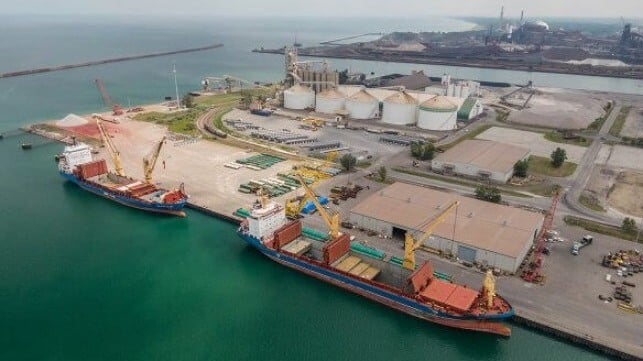Ports of Indiana Plans to Establish First Container Port on Lake Michigan

Ports of Indiana, the 63-year-old authority managing the state’s ports, is proceeding with a plan to develop the first international sea cargo container terminal on Lake Michigan. According to the authority, it would create the only all-water container route for ocean vessels to serve the greater Chicago metropolitan area via the Great Lakes.
The initiative is gaining momentum. The port commission in June approved the plan authorizing the authority to proceed with the planning and development of the container capabilities which would be incorporated into the port of Burns Harbor. Following that, U.S. Customs and Border Protection (CBP) this week issued a letter approving the plan and agreeing to staff the facility.
“This is a critical step in a long process to establish a container terminal at Ports of Indiana-Burns Harbor and a new supply chain for international container shipments,” said Ports of Indiana CEO Jody Peacock. “Having an all-water container route into the Midwest could create transformational opportunities.”
The Burns Harbor terminal is located in northwest Indiana, approximately 40 miles southeast of the city of Chicago. It is part of the 25th largest U.S. port, which handles 25 million tons of cargo annually, including steel, steel manufacturing, construction materials, and agriculture. Port officials highlight that they can handle containers but do not have dedicated facilities currently. Further, with 75 acres of available land, including 35 acres near the dock wall, the port has space to expand.
CBP determined Ports of Indiana’s project justifies the need for a staffed CBP container cargo examination facility at the Burns Harbor port. Ports of Indiana will be responsible for providing infrastructure construction to include a CBP office, equipment, furnishings, supplies, large-scale non-inspection equipment, radiation portal monitors, and security per CBP’s specifications.
“Great Lakes shipping is limited by a shorter shipping season and the use of smaller vessels, but the potential upside for handling containers is tremendous,” said Ryan McCoy, port director at Ports of Indiana-Burns Harbor. “Allowing ocean carriers to start serving this market could diversify supply chains, avoid bottlenecks, and reduce the overall carbon footprint for shipping to and from the Midwest.”

that matters most
Get the latest maritime news delivered to your inbox daily.
Among U.S. Great Lakes ports, Cleveland and Duluth currently handle container vessels, while Monroe, Michigan, is also pursuing CBP approval. According to Ports of Indian, adding Burns Harbor to the list of Great Lakes container ports would allow shippers to utilize a network of container terminals which now includes the largest metropolitan area on the Lakes.
The current plan calls for building the facilities in 2025. They expect to start ocean shipping in 2026.
